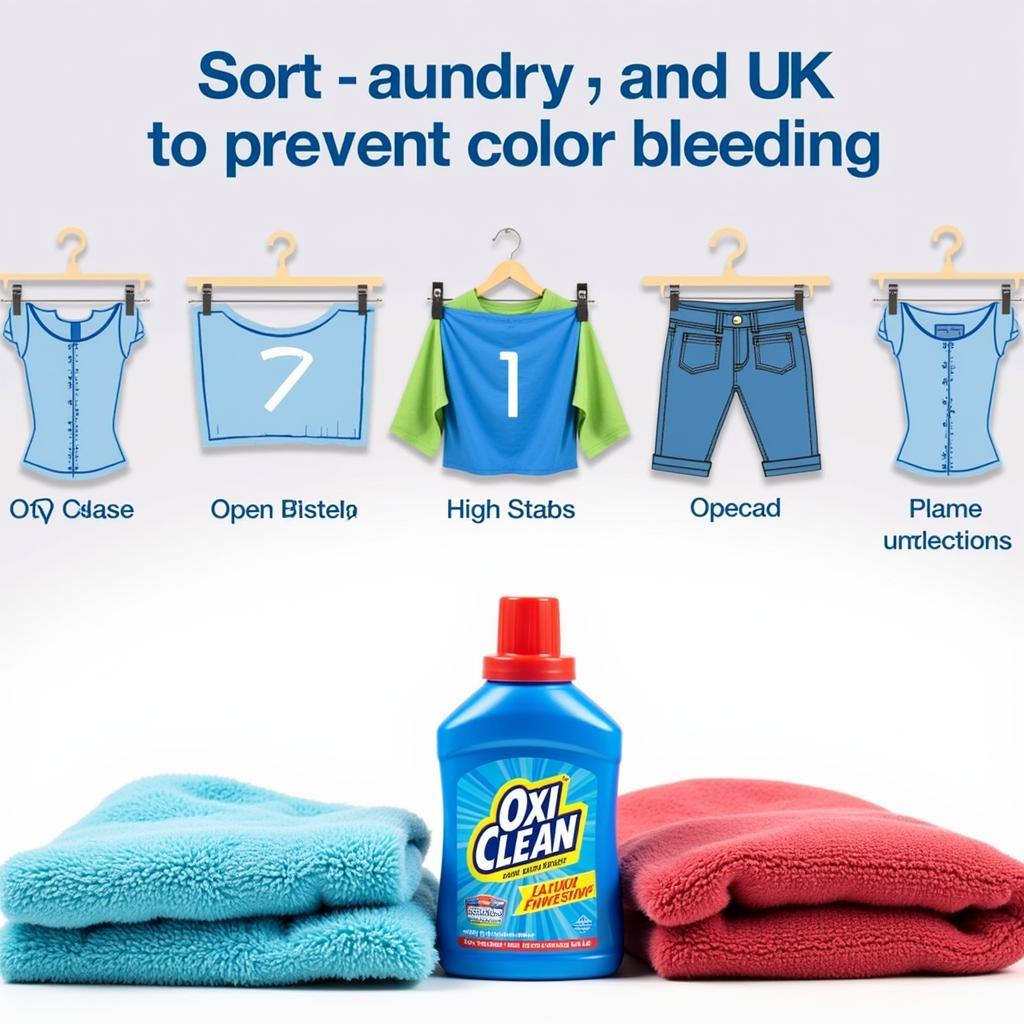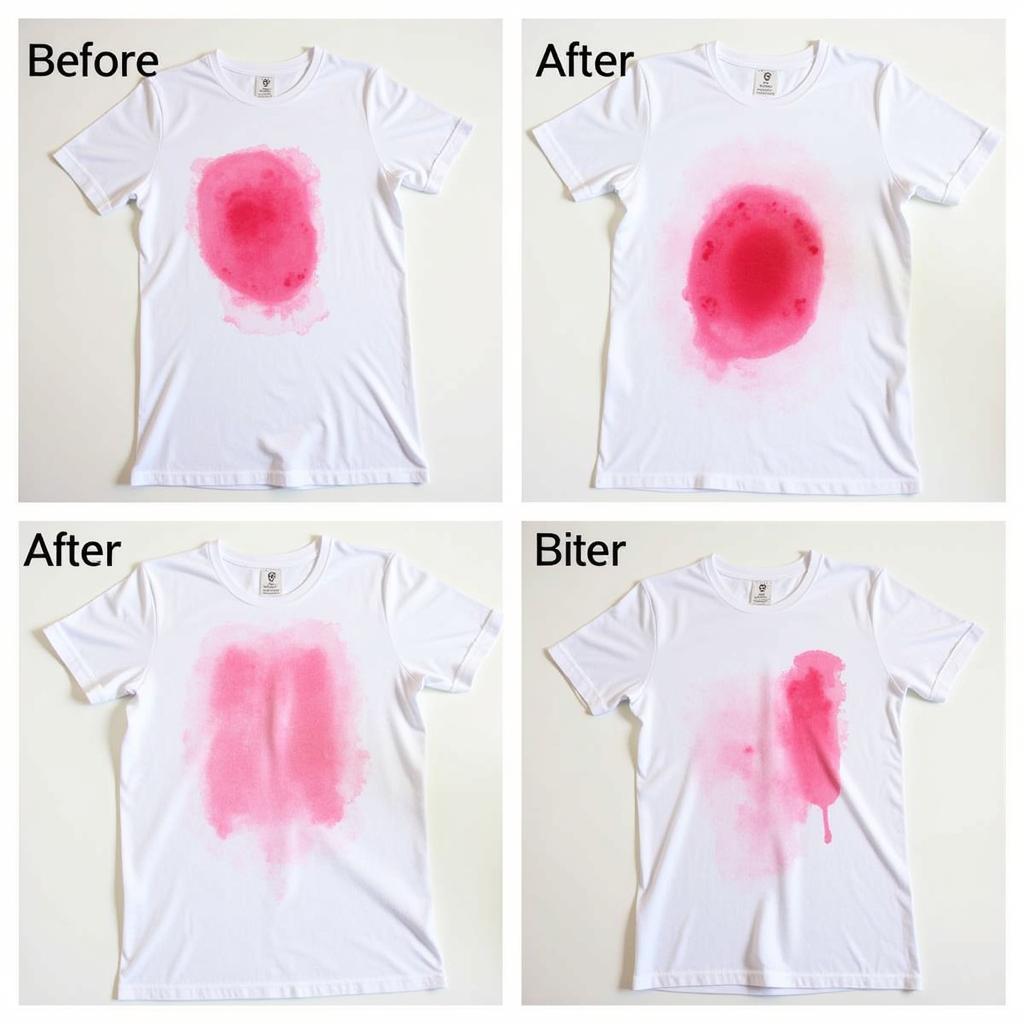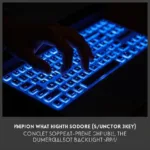OxiClean is a popular household cleaner known for its stain-fighting power. But Does Oxiclean Remove Color Bleeding? This comprehensive guide will explore the effectiveness of OxiClean in tackling dye transfer and offer practical tips for preventing and addressing this common laundry mishap. We’ll delve into the science behind color bleeding, the different types of OxiClean, and best practices for using this versatile product.
Understanding Color Bleeding
Color bleeding occurs when dyes from one garment transfer to another during washing. This is often caused by loose dyes in brightly colored fabrics, especially new ones. Factors like water temperature, fabric type, and detergent can also influence dye transfer. Recognizing the culprit fabric is key to preventing future incidents. Is it a new red shirt or those dark wash jeans? Knowing this can save you from a laundry disaster.
Have you ever pulled a load of laundry from the washer only to discover your white socks are now a delicate shade of pink? This frustrating scenario is a classic example of color bleeding. Understanding why this happens is the first step towards preventing it.
 Preventing Color Bleeding with OxiClean
Preventing Color Bleeding with OxiClean
Does OxiClean Actually Work on Color Bleeding?
The answer is: it depends. OxiClean can be effective in removing or reducing color bleeding, especially when used promptly. However, its success depends on factors like the severity of the dye transfer, the fabric type, and the type of OxiClean used. For light color bleeding, OxiClean can often restore the original color of the affected garment. However, for severe cases, especially on delicate fabrics, the damage might be irreversible.
While OxiClean is a powerful cleaning agent, it’s not a miracle worker. Its effectiveness is maximized when used as a preventative measure or immediately after the color bleeding incident occurs.
Different Types of OxiClean and Their Uses
OxiClean comes in various forms, each with its own strengths. OxiClean Versatile Stain Remover powder is a popular choice for general laundry use, while OxiClean White Revive is specifically formulated for white clothes. OxiClean Max Force Gel Stick is designed for targeted stain removal. Understanding these differences is crucial for achieving the best results.
How to Use OxiClean to Remove Color Bleeding
Using OxiClean for color bleeding requires a slightly different approach than regular stain removal. Here’s a step-by-step guide:
- Sort your laundry: Separate the affected garments from other clothes.
- Pre-soak: Soak the bleeding garment in cold water with OxiClean according to the product instructions. For stubborn stains, consider a longer soak.
- Wash: Launder the garment as usual, adding OxiClean to the wash cycle. Check do colors run in cold water for best practices.
- Inspect: After washing, inspect the garment. If the color bleeding persists, repeat the process.
- Dry: Once satisfied, dry the garment as usual. Avoid putting the garment in the dryer if the stain remains, as heat can set the dye transfer.
Preventing Color Bleeding
Prevention is always better than cure. Here are some simple yet effective strategies for avoiding color bleeding:
- Sort clothes by color: This is a fundamental laundry practice. Always separate whites, lights, and darks.
- Wash new clothes separately: New clothes are more likely to bleed dye. Wash them individually for the first few washes.
- Use cold water: Cold water helps to prevent dye transfer.
- Vinegar: Adding a cup of white vinegar to the rinse cycle can help set colors and prevent bleeding. Learn how to brighten colors with simple techniques. See how to keep colors bright tie dye.
- Color catchers: These handy sheets can absorb loose dyes in the wash, preventing them from staining other clothes.
 Removing Color Bleeding with OxiClean
Removing Color Bleeding with OxiClean
Expert Insights
“Preventing color bleeding is much easier than trying to remove it after it happens,” says laundry expert, Amelia Washburn. “Taking preventative measures like sorting your laundry and using color catchers can save you a lot of time and frustration.”
Another expert, Dr. Fabric Dye, a textile chemist, adds, “The chemical composition of dyes plays a significant role in color bleeding. Some dyes are inherently more prone to bleeding than others.” Understanding your fabrics can be beneficial, especially when dealing with stubborn stains like hair dye. For tips on removing hair dye from fabric, see how to get hair color out of fabric.
Conclusion
So, does OxiClean remove color bleeding? While it’s not a guaranteed solution for all cases, OxiClean can be a valuable tool in your laundry arsenal. By understanding the nuances of color bleeding and using OxiClean correctly, you can significantly improve your chances of restoring your clothes to their original brilliance.
FAQ
- Can OxiClean remove old color bleeding stains?
- Is OxiClean safe for all fabrics?
- What’s the difference between OxiClean powder and liquid?
- Can I use OxiClean with bleach?
- How long should I soak clothes in OxiClean?
- Can OxiClean damage clothes?
- What should I do if OxiClean doesn’t remove the color bleeding?
Need help with your color bleeding woes? Contact us at Phone Number: 0373298888, Email: [email protected] or visit us at 86 Cầu Giấy, Hanoi. We have a 24/7 customer support team.

